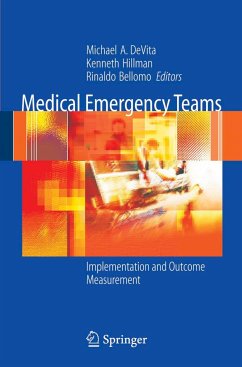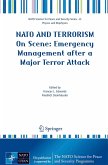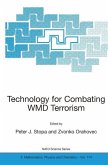Medical Emergency Teams: A Manual for Preventing Preventable Hospital Deaths addresses the problem of patient safety and quality of care; the logistics of creating a MET (resource allocation, process design, workflow, and training); the implementation of a MET (organizational issues, challenges); and the evaluation of program results. Based on successful MET models that have resulted in reduced in-hospital cardiac arrest and overall hospital death rates, this book is the first practical guide for physicians, hospital administrators, and other healthcare professionals who wish to initiate a MET program within their own institutions.
Why Critical Care Evolved METs? In early 2004, when Dr. Michael DeVita informed me that he was cons- ering a textbook on the new concept of Medical Emergency Teams (METs), I was surprised. At Presbyterian-University Hospital in Pittsburgh we int- duced this idea some 15 years ago, but did not think it was revolutionary enough to publish. This, even though, our fellows in critical care medicine training were all involved and informed about the importance of "C- dition C (Crisis)," as it was called to distinguish it from "Condition A (Arrest). "We thought it absurd to intervene only after cardiac arrest had occurred,because most cases showed prior deterioration and cardiac arrest could be prevented with rapid team work to correct precluding problems. The above thoughts were logical in Pittsburgh, where the legendary Dr. Peter Safar had been working since the late 1950s on improving current resuscitation techniques, ?rst ventilation victims of apneic from drowning, treatment of smoke inhalation, and so on. This was followed by external cardiac compression upon demonstration of its ef?ciency in cases of unexpected sudden cardiac arrest. Dr. Safar devoted his entire professional life to improvement of cardiopulmonary resuscitation. He and many others emphasized the importance of getting the CPR team to o- of-hospital victims of cardiac arrest as quickly as possible.
Why Critical Care Evolved METs? In early 2004, when Dr. Michael DeVita informed me that he was cons- ering a textbook on the new concept of Medical Emergency Teams (METs), I was surprised. At Presbyterian-University Hospital in Pittsburgh we int- duced this idea some 15 years ago, but did not think it was revolutionary enough to publish. This, even though, our fellows in critical care medicine training were all involved and informed about the importance of "C- dition C (Crisis)," as it was called to distinguish it from "Condition A (Arrest). "We thought it absurd to intervene only after cardiac arrest had occurred,because most cases showed prior deterioration and cardiac arrest could be prevented with rapid team work to correct precluding problems. The above thoughts were logical in Pittsburgh, where the legendary Dr. Peter Safar had been working since the late 1950s on improving current resuscitation techniques, ?rst ventilation victims of apneic from drowning, treatment of smoke inhalation, and so on. This was followed by external cardiac compression upon demonstration of its ef?ciency in cases of unexpected sudden cardiac arrest. Dr. Safar devoted his entire professional life to improvement of cardiopulmonary resuscitation. He and many others emphasized the importance of getting the CPR team to o- of-hospital victims of cardiac arrest as quickly as possible.
From the reviews:
"The aim of this book is to provide a manual describing the approach to creating a Medical Emergency Team (MET) service and evaluating its performance. The book presents a comprehensive overview of the concept ... . Examples from practice are frequently cited from a global perspective. ... Chapters are self-sufficient units that each review one aspect of the MET. ... it is an important guide to the dos and don'ts of establishing a MET." (Ann McGinley and Rupert M Pearse, Critical Care Forum, April, 2007)
"The medical emergency team (MET) is a concept which is aimed at identifying those hospital patients at risk of clinical deterioration. ... This book aims to be a guide to health care professionals and administrators wishing to implement this concept in their hospital. It is intended primarily as a resource for those aiming to set up a MET in their hospital. ... It should certainly be read by hospital administrators and those interested in quality improvement, currently working in hospitals without such teams." (L. Walker and N. R. Webster, British Journal of Anaesthesia, Vol. 97 (6), 2006)
"A comprehensive multiauthored review that examines techniques for implementation and assessment of hospital-based medical emergency teams (METs). ... This readable text provides great background and advice for anyone involved in implementation of a MET. ... All physicians actively involved in a hospital-based practice. In addition, nurses, respiratory therapists, and hospital administrators actively involved in MET implementation will find ... useful." (Nicola Schiebel, Mayo Clinic Proceedings, Vol. 81 (7), July, 2006)
"The aim of this book is to provide a manual describing the approach to creating a Medical Emergency Team (MET) service and evaluating its performance. The book presents a comprehensive overview of the concept ... . Examples from practice are frequently cited from a global perspective. ... Chapters are self-sufficient units that each review one aspect of the MET. ... it is an important guide to the dos and don'ts of establishing a MET." (Ann McGinley and Rupert M Pearse, Critical Care Forum, April, 2007)
"The medical emergency team (MET) is a concept which is aimed at identifying those hospital patients at risk of clinical deterioration. ... This book aims to be a guide to health care professionals and administrators wishing to implement this concept in their hospital. It is intended primarily as a resource for those aiming to set up a MET in their hospital. ... It should certainly be read by hospital administrators and those interested in quality improvement, currently working in hospitals without such teams." (L. Walker and N. R. Webster, British Journal of Anaesthesia, Vol. 97 (6), 2006)
"A comprehensive multiauthored review that examines techniques for implementation and assessment of hospital-based medical emergency teams (METs). ... This readable text provides great background and advice for anyone involved in implementation of a MET. ... All physicians actively involved in a hospital-based practice. In addition, nurses, respiratory therapists, and hospital administrators actively involved in MET implementation will find ... useful." (Nicola Schiebel, Mayo Clinic Proceedings, Vol. 81 (7), July, 2006)








